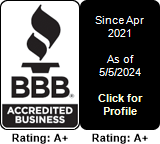Search engine optimization has changed. Earlier, most strategies revolved around keyword repetition. Content was written to match specific phrases without considering the reader’s goal. These methods often led to visibility, but not to meaningful interaction. Today, search engines evaluate content based on whether it solves a specific task. Matching text is not enough. Pages must reflect the purpose behind the search.
This change affects how topics are selected, structured, and measured. Search performance now depends on clarity, relevance, and alignment with what users aim to accomplish. Intent is not a secondary factor. It is the basis of effective SEO.
Defining Search Intent
Search intent is the reason behind a query. It reflects what the user expects to achieve. Google uses this context to evaluate which pages to rank. Understanding intent types helps match structure and message to user expectations. The four primary types are:
- Informational: The user seeks explanations or facts. Example: “how to structure internal links”
- Navigational: The user looks for a specific brand or site. Example: “Moz login”
- Transactional: The user plans to take action. Example: “subscribe to SEO newsletter”
- Commercial Investigation: The user compares options. Example: “best SEO tools for freelancers”
Each intent corresponds to a different kind of content. Informational searches benefit from educational articles. Navigational needs are served by clear entry points. Transactional users require direct access and minimal friction. Commercial research benefits from objective comparisons. Misalignment leads to short visits and low interaction.
Detecting Intent from Search Results
The layout of a search result page often signals the expected intent. For example:
- Featured snippets suggest a need for short, specific answers.
- “People Also Ask” boxes indicate multi-layered informational depth.
- Shopping carousels and local maps relate to transactional or location-based needs.
- Headline comparisons and star ratings appear in commercial queries.
Intent can also be inferred from modifiers in the query. Words like “how,” “top,” “buy,” “vs,” or “near me” signal specific user goals. Grouping keywords by these markers helps organize content strategy.
SEO tools assist with this classification. Platforms such as Ahrefs, Semrush, and Search Console can group queries by phrase structure and keyword intent. However, manual review remains necessary, especially when assessing content alignment.
Structuring Content by Intent
Informational Content
Use clear sections. Break down topics using headers that answer common subquestions. Provide examples where possible. Add visuals to support complex explanations. Keep the layout simple and readable. Include optional resources without overwhelming the reader.
Navigational Content
Make brand or tool pages easy to reach. Use descriptive titles that reflect exact queries. Avoid distractions. Offer fast-loading pages, visible buttons, and clean menus. Ensure that searchers find what they expect immediately.
Transactional Content
Limit competing links. Place the main action above the fold. Use short forms. Add trust markers like reviews, certifications, or return policies. Ensure that price, function, and result are clearly visible.
Commercial Research Content
Use structured tables to compare features. Include key performance indicators. Add quotes from actual users. Organize content so the reader can scan, compare, and decide. If possible, include direct links to purchase or learn more.
Poor alignment between content type and user intent results in confusion. Structure must support the decision process relevant to each search type.
Metadata and Language That Reflect Intent
Title tags and descriptions influence click behavior. These elements must reflect the page’s function, not just its topic. For example:
- Informational: “How to Improve Site Speed – A Step-by-Step Guide”
- Commercial: “Speed Comparison: SiteGround vs Bluehost Hosting”
- Transactional: “Order Your SEO Site Audit – 48-Hour Delivery”
Headings should follow natural phrasing. Avoid inserting keywords into every subheading. Use question-style headers where relevant. This reflects how users think and improves content clarity.
Vary related terms across the page to support concept coverage. For example, use “tools,” “platforms,” and “software” interchangeably if appropriate. This avoids repetition and increases semantic reach.
Technical Elements That Support Intent
Schema markup helps define the content role. Match schema type to user intent:
- Use HowTo, Article, or FAQPage for informational pages.
- Use Product, Offer, or Review for transactional or comparative content.
- Use BreadcrumbList, WebPage, or Organization for navigational areas.
Validate implementation with Google’s Rich Results Test. Monitor performance through Search Console’s enhancement reports.
Load speed and layout stability also matter. Informational content must be easy to scroll and read. Transactional content must load quickly and display clearly. Core Web Vitals (LCP, FID, CLS) affect both ranking and usability. Optimize for responsive design, reduced script delay, and efficient media delivery.
Internal links also support intent. Use them to guide users from informational pieces to related tools or services. Avoid sending them into unrelated parts of the site.
Measuring Content by Intent Alignment
Use metrics that reflect user behavior in context. Match performance indicators to intent:
- Informational: session time, scroll depth, page interaction
- Navigational: bounce rate, branded query CTR, page path completion
- Transactional: form submissions, purchases, direct action events
- Commercial: assisted conversions, resource downloads, trial signups
In GA4, set up custom events to measure interactions. Use intent-based segments. Label each URL by intent type and evaluate KPIs accordingly. Funnel analysis helps spot where users exit or convert.
Search Console adds query-level data. Monitor changes in impressions and CTR for queries tied to each intent. Use this data to refine structure, language, and internal paths.
Maintaining Intent-Centric Strategy
Content teams must document and track intent throughout the content lifecycle. Use a table to organize content by:
- Target query
- Assumed intent
- Content format
- Desired CTA
- Measurement method
Update this map as queries evolve. Align it with customer feedback, live chat logs, or sales input. Regular review ensures the content stays connected to user goals. Intent-first writing improves discoverability, conversion, and experience consistency.
18 Expert FAQs on Search Intent and SEO Strategy
1. What is search intent?
It is the reason a user conducts a search. It reflects the goal they hope to complete through that search.
2. How does intent affect SEO?
Intent determines what content format will perform well for a given keyword. Google ranks pages that fulfill the expected outcome.
3. Can one page serve multiple intents?
In limited cases, yes. But it usually reduces clarity. It’s better to focus on one intent per page.
4. How do I identify intent from keywords?
Review SERP features and use intent modifiers like “how to,” “vs,” “near me,” or “buy.”
5. Why is commercial intent often overlooked?
Because it falls between education and conversion. It requires analysis, not just facts or direct sales messaging.
6. Should internal links reflect intent flow?
Yes. Informational pages should lead to product or service areas when relevant.
7. Can schema affect intent recognition?
Schema helps clarify content type. It does not define intent, but it reinforces the structure expected for a specific goal.
8. How do I test if a page matches intent?
Watch user behavior. If they leave early or don’t take expected actions, intent may be mismatched.
9. Does search volume matter if intent is clear?
Not always. A low-volume, high-intent keyword can outperform broader terms in conversions.
10. How often should I review intent alignment?
Every quarter for key pages. Behavior patterns and Google’s preferences change.
11. What metrics confirm intent success?
Engagement signals such as scroll depth, return visits, or conversion rates depending on content purpose.
12. Should I separate content teams by intent type?
In larger teams, yes. Writers focused on guides need different inputs than those building landing pages.
13. Is featured snippet targeting tied to intent?
Yes. Snippets usually reflect informational or definitional searches.
14. Should FAQs be used everywhere?
Only when the page serves informational needs or the questions provide standalone value.
15. Can I use ChatGPT or AI tools to infer intent?
You can use them for suggestions, but final decisions should rely on human review and real data.
16. What’s a fast way to detect intent mismatch?
Compare expected behavior (like form fills) to actual outcomes. High traffic with low engagement is a signal.
17. Is URL structure related to intent?
It helps. Clean URLs that match content type improve clarity and tracking.
18. Does Google penalize pages that don’t match intent?
It may not be a manual penalty, but rankings drop when content underperforms due to user dissatisfaction.
If you’re looking for a proven Macon SEO company that understands how local search works and builds websites that perform beyond the page, we’re ready when you are.


